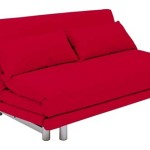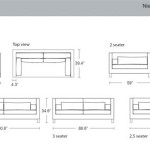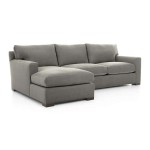In the Sofa or On the Sofa: Exploring Proper Preposition Use
The seemingly simple question of whether to use "in" or "on" with "sofa" often sparks debate. While both prepositions are used in everyday conversation, grammatical conventions and the specific context influence which is considered more appropriate.
The general rule dictates that "on" is the preferred preposition when referring to a sofa. This stems from the perception of a sofa as a surface for sitting upon, similar to a chair or bench. One sits *on* a chair, *on* a bench, and therefore, *on* a sofa. This aligns with the broader grammatical principle of using "on" for surfaces that support objects or people.
However, the preposition "in" can also be acceptable under specific circumstances. The key factor is the perceived depth and enclosure of the sofa. A large, plush, or deeply cushioned sofa might invite the image of sinking *into* its depths. This usage suggests more than mere surface contact; it implies being enveloped or surrounded, much like sitting *in* an armchair.
The size and design of the sofa contribute significantly to this distinction. A small, firm sofa with minimal cushioning provides less opportunity for sinking in, making "on" the more natural choice. Conversely, a large, overstuffed sectional sofa, with deep seats and numerous cushions, lends itself to the use of "in." Think of the difference between perching on a park bench and settling into a plush armchair. The perceived level of enclosure influences preposition choice.
Regional variations in language also play a role. In some dialects or regions, "in" the sofa might be more common, reflecting local linguistic norms. While "on" remains the grammatically preferred option in standard English, these regional variations demonstrate the fluidity of language and how prepositional usage can evolve within specific communities.
Beyond size and regional variations, the context of the sentence itself can influence preposition choice. Consider the following examples: "The cat was hiding in the sofa" versus "The book was left on the sofa." In the first example, "in" suggests the cat is nestled within the cushions, concealed from view. The second example uses "on" to indicate the book rests on the surface of the sofa.
The intended meaning also contributes to appropriate preposition usage. If the focus is on location, "on" often suffices. For instance, "They sat on the sofa and watched television." However, if the intention is to emphasize the comfort and encompassing nature of the sofa, "in" might be more suitable. "She curled up in the sofa and fell asleep" suggests a deeper level of comfort and enclosure.
Figurative language can also influence preposition choice. Phrases like "lost in thought on the sofa" utilize "on" despite potentially implying a deep state of contemplation. This usage highlights that while literal physical position influences preposition choice, figurative language can introduce nuances that deviate from strict grammatical rules.
The debate over "in" versus "on" the sofa underscores the complexities of preposition usage. While "on" remains the generally accepted and grammatically preferred option, the use of "in" isn't necessarily incorrect. Context, sofa design, regional variations, and intended meaning all contribute to determining the most appropriate preposition.
Ultimately, the choice between "in" and "on" often comes down to individual preference and the specific nuance one wishes to convey. While adhering to the general rule of using "on" is recommended in formal writing, the flexibility of language allows for "in" to be used when the context warrants it, particularly when emphasizing comfort and enclosure.
Understanding the factors that influence preposition choice allows for more precise and nuanced communication. By considering the size and design of the sofa, the intended meaning of the sentence, and regional variations, one can make informed decisions about whether to use "in" or "on" the sofa, ensuring clear and effective communication.
While strict grammarians might advocate solely for the use of "on," the reality is that language evolves, and usage adapts to reflect different contexts. Recognizing this fluidity allows for a more comprehensive understanding of how prepositions function and how meaning can be subtly shaped by these seemingly small words.
Therefore, while "on the sofa" remains the generally accepted standard, considering the nuances discussed can empower individuals to make informed choices about preposition usage, adapting their language to best suit the specific context and intended meaning.
Preposition In On The Sofa Wordreference Forums

Tired Man Lay Down To Take A Nap On The Sofa In Living 52 Off

Does Sleeping On The Couch Have Any Health Benefits Or Side Effects

Faq What S The Difference Between A Sofa And Couch Wfmo

Sofa Guide For 2024 Reviews By Wirecutter

Types Of Sofas And Couches Based On Design Material

Faq What S The Difference Between A Sofa And Couch Wfmo

11 Best Couches And Sofas To Buy 2024 The Strategist

15 Most Comfortable Couches Sofas Of 2024

Sofa Shame Is It The Couch Or Your Posture Police








